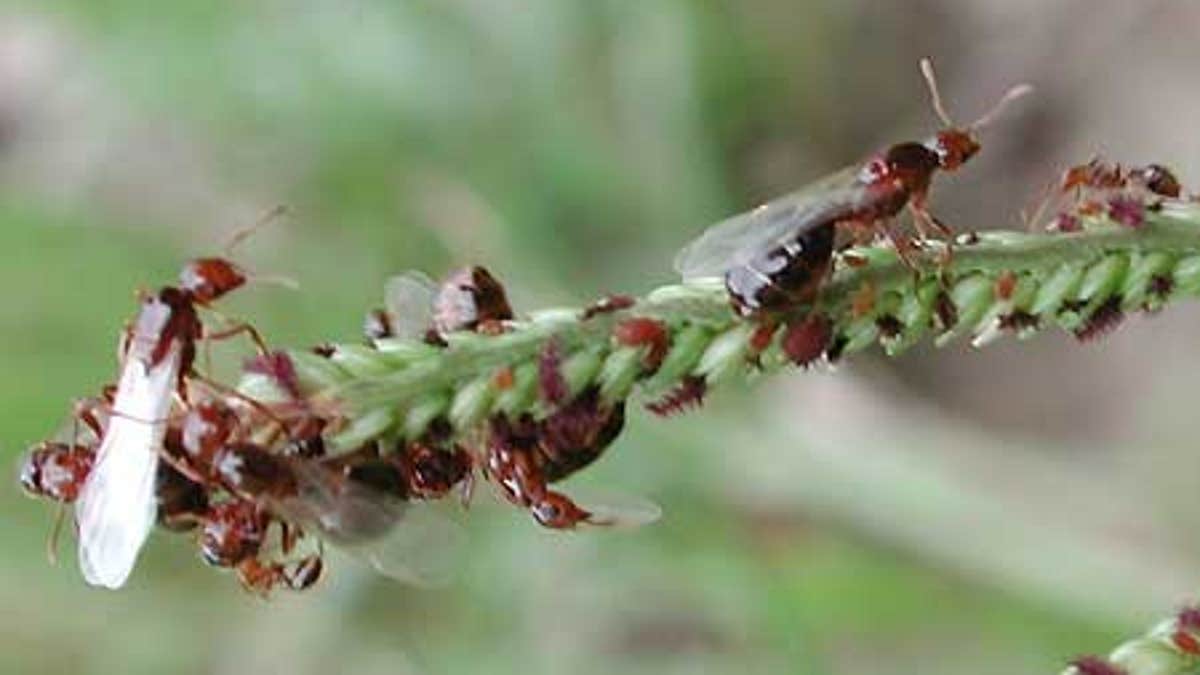
ST. LOUIS — The red imported fire ant, an aggressive stinging and biting nuisance that can also cause economic hardship, has made its way into Missouri.
A colony of the ants was discovered late last month in the yard of a home on the edge of the southeast Missouri town of Kennett. Missouri state extension entomologist Richard Houseman said Thursday it was the first confirmed report of the fire ant here. The ant has also been reported in 13 other states — all in the southeastern U.S. except for California.
Houseman and Judy Grundler, entomologist for the Missouri Department of Agriculture, said they believed the mound had been on the Kennett property for several months. No other mounds were found in the immediate area but a more extensive survey in and around Kennett is planned, Houseman said.
The ants have been in the U.S. for more than 50 years, arriving in soil used as ballast in cargo ships from their native South America.
Through their digging, the ants form massive colonies that can destroy crops, damage farms, hasten soil erosion, cause potholes in roads, even damage bridge joints and electrical lines. They cause an estimated $6 billion in damages annually in the U.S.
And, boy, can they bite. And sting. Entomologists describe them as ultra-aggressive as they go after everything, from other insects to small mammals, reptiles, livestock and humans. When they bite they release a pheromone that prompts all of the ants to sting simultaneously.
They can sting through clothing and the venom causes a burning sensation that earned the ants their name. A bite or sting will cause blisters on human skin, and there have been rare cases of human deaths from red imported fire ants.
But mostly, it just really hurts.
"They both bite and sting, so it's pretty painful," Houseman said.
Officials aren't sure how the ants arrived in Kennett, but Houseman said it could have been from landscaping plants purchased in nearby states where fire ants are established, including Arkansas and Tennessee.
If the ants show up on farms, landowners may need to move hay bales or nursery stock, entomologists said. The red imported fire ant isn't unusually big or small. It is dark reddish-brown in color and can be confused with the more common red ant in Missouri. The obvious difference is in the behavior.
"These are much more aggressive," Houseman said. "They're aggression kind of tips you off." Also, their mounds are made up solely of soil, unlike typical ants that also use plant material.
Houseman encouraged anyone who believes they have the ants on their property to collect samples and get them to a University of Missouri Extension office or to the state Department of Agriculture.
The mounds can be huge — the average colony contains up to 500,000 workers. To get rid of a mound, Houseman and University of Missouri agronomy specialist Mike Milam suggest saturating it with a liquid insecticide, then follow that with granular ant bait specially formulated for red imported fire ants.
